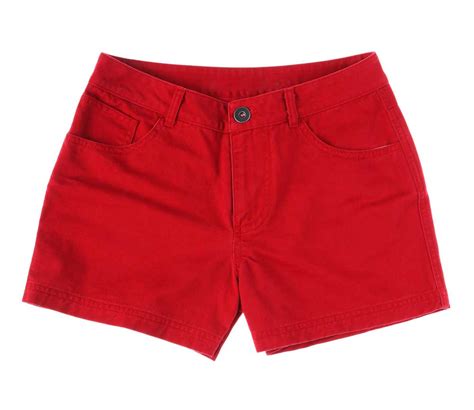Introduction
Elegant, chic, and versatile, the short and bobbed haircut has captivated women of all ages for centuries. From the iconic flappers of the roaring twenties to the modern style mavens of today, this timeless style has remained a popular choice for those who desire a blend of sophistication and ease.

Historical Evolution
The short bob emerged in the early 20th century as a symbol of rebellion against society’s rigid beauty standards. In the 1920s, daring women such as Coco Chanel and Louise Brooks popularized the style, embracing a liberating and androgynous look.
Over the decades, the bob has undergone various transformations, from the sleek and geometric bob of the 1960s to the layered and textured bob of the 1990s. Each iteration has reflected the changing fashion trends and cultural sensibilities of its time.
Current Trends
Today, the short bob remains a versatile and stylish option for women of all ages and hair types. It can be tailored to suit individual preferences and facial shapes, with variations such as:
- Classic Bob: A timeless and elegant bob that falls just below the jawline, with a slightly rounded silhouette.
- Asymmetrical Bob: A modern and edgy bob with one side longer than the other, creating a dynamic and flattering effect.
- Inverted Bob: A bob with shorter layers at the front and longer layers at the back, adding volume and lift.
- Graduated Bob: A bob with layers of increasing length, creating a soft and feathered effect.
Benefits of a Short Bob
- Ease of Styling: Short bobs are relatively low-maintenance, requiring minimal styling effort. They can be air-dried or blow-dried with ease.
- Versatility: Bobs can be dressed up or down, making them suitable for a wide range of occasions. They can be styled with curls, waves, or straight hair, and can be accessorized with headbands, clips, or hairpins.
- Flattering for All Face Shapes: Bobs can be adapted to complement different facial features, from oval to round to square. A skilled hairstylist can create a bob that enhances the shape of the face.
Step-by-Step Guide to Cutting a Short Bob
For those considering cutting a short bob at home, follow these steps:
- Prepare your hair: Wash and towel-dry your hair. Comb through to remove any tangles.
- Section your hair: Divide your hair into top, middle, and bottom sections. Pin the top and bottom sections out of the way.
- Determine the desired length: Decide on the length you want the bob to be. Use a measuring tape if necessary.
- Cut the back section: Start at the nape of the neck and cut a horizontal line across the back. Gradually angle the scissors upwards towards the crown.
- Cut the side sections: Use the back section as a guide and cut the side sections at a slightly shorter length. Blend the sections together.
- Shape the bob: Use point-cut scissors or a razor to remove any excess weight or create a textured effect.
- Check and adjust: Style the hair and check the overall shape. Make any necessary adjustments to achieve the desired look.
FAQs
1. How often should I trim my bob?
– Every 6-8 weeks to maintain its shape and prevent split ends.
2. What products should I use to style my bob?
– A volumizing mousse or spray, a texturizing spray, and a smoothing serum for flyaways.
3. Can I wear a bob with thick hair?
– Yes, with the right layering and shaping techniques, a bob can be adapted to thick hair textures.
4. Is a bob suitable for curly hair?
– Yes, with proper styling techniques and products, a bob can enhance the natural curls and add definition.
Utility Tables
Table 1: Bob Variations for Different Face Shapes
| Face Shape | Bob Variation | Effect |
|---|---|---|
| Oval | Classic Bob | Enhances balance and symmetry |
| Round | Inverted Bob | Lengthens and slims the face |
| Square | Asymmetrical Bob | Softens sharp angles and adds movement |
| Heart | Graduated Bob | Creates volume and reduces width at the forehead |
Table 2: Bob Lengths and Occasions
| Length | Occasions |
|---|---|
| Chin-length | Formal events, elegant gatherings |
| Just below the jawline | Business settings, professional meetings |
| Shoulder-length | Casual settings, parties |
| Collarbone-length | Everyday wear, versatile for all occasions |
Table 3: Bob Styling Ideas
| Style | Technique | Occasion |
|---|---|---|
| Sleek and Straight | Blow-dry with a round brush, use a smoothing serum | Formal events, business meetings |
| Wavy and Tousled | Braid damp hair overnight, add a texturizing spray | Casual outings, weekend wear |
| Curly and Defined | Use a curl enhancer, diffuse hair to maintain definition | Parties, social gatherings |
| Asymmetrical with Volume | Blow-dry with a root lifter, tease the shorter side | Edgy and modern |
Table 4: Bob Maintenance Tips
| Tip | Importance |
|---|---|
| Regular trims | Prevents split ends and maintains shape |
| Deep conditioning | Nourishes and strengthens hair |
| Heat protection | Protects hair from damage when styling |
| Proper brushing | Removes tangles and distributes natural oils |
| Avoid over-washing | Preserves natural oils and prevents dryness |
